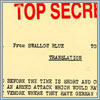

|
|
"Swallow Blue" is Einar Skinnarland, a native of Rjukan, the
town nearest the plant. From his hut on the Hardanger Plateau
above Rjukan, Skinnarland, along with other members of the
Resistance both outside and within the plant, served as the
Special Operations Executive's eyes on Vemork. "IMI" is the
codename for heavy water. By "reprisals" after an attack,
Skinnarland means the Germans would naturally suspect and take
revenge on local Norwegians, a great concern to the Resistance
fighters, who grew up in the area.
|
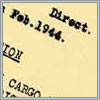

|
|
Skinnarland's boss in London was Leif Tronstad, chief of
intelligence, espionage, and sabotage for the Norwegian
Resistance effort and, as it happens, codesigner of the
original high-concentration plant at Vemork. All messages
between the two were in Norwegian and had to be translated for
their British counterparts. "Limpet" here refers to plastic
explosive. To keep retaliations against locals to a minimum,
Tronstad suggests the saboteurs leave behind British effects
so the Germans will think the attack was conducted by British
commandos.
|


|
|
"Bonzo" is Knut Haukelid, another Resistance operative, who is
heading up the operation to sink the ferry. Through
Skinnarland, Haukelid is passing on what he's heard from one
of the partisans' most valuable contacts inside the plant,
Kjell Nielsen, Vemork's transport engineer. Nielsen believes
the amount of useful heavy water the Germans would be able to
secure from the Norwegian stocks is not worth the inevitable
reprisals on locals. As the transfer of the heavy water is set
to begin in three days, Skinnarland requests an immediate
response from London.
|
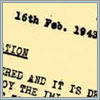

|
|
Tronstad obliges by responding the same evening. (The year,
given here as 1943, is a transcriber's error.) Fearing the
worst—that even such uneven stocks of heavy water could
help the Nazis create an A-bomb—the Allied High Command
decides that the probable loss of Norwegian lives from the
explosion aboard the ferry and by drowning in the freezing
water of Lake Tinn, as well as through Nazi reprisals, is
regrettable but necessary.
|
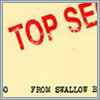

|
|
In the wee hours of February 20, the day the ferry sailed with
the heavy water, Knut Haukelid and two companions slipped
aboard the vessel, affixed a long tube of plastic charge in
the bow belowdecks, and retreated. The charge was set to go
off roughly 45 minutes after the ferry left the dock at 10
a.m., to ensure the boat had reached deep water. As this
message of Skinnarland's three days later declares, the
operation was a success—save for the loss of 14 innocent
lives.
|
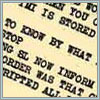

|
|
The day after Skinnarland's telegram describing the outcome of
the attack, Tronstad replies. London is pleased but still
concerned about any heavy-water stocks remaining at Vemork
that might make it to Germany. They just can't risk any chance
for a Nazi nuclear bomb.
|
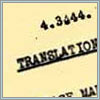

|
|
Over a week later Tronstad and his English bosses in London
still seek confirmation of exactly what went down with the
ferry. Beyond assurances from Norwegians who swore they saw
the loading of heavy water into barrels at the plant,
confirmation was impossible, however, as the barrels now lay
at the bottom of Lake Tinn. After the war, Karl Wirtz, a
German expert on heavy water, claimed that German officals at
Vemork had indeed put dummy barrels on the ferry. Only the
NOVA expedition in 2003 confirmed that the shipment did hold
the coveted compound after all.
|

|

|

